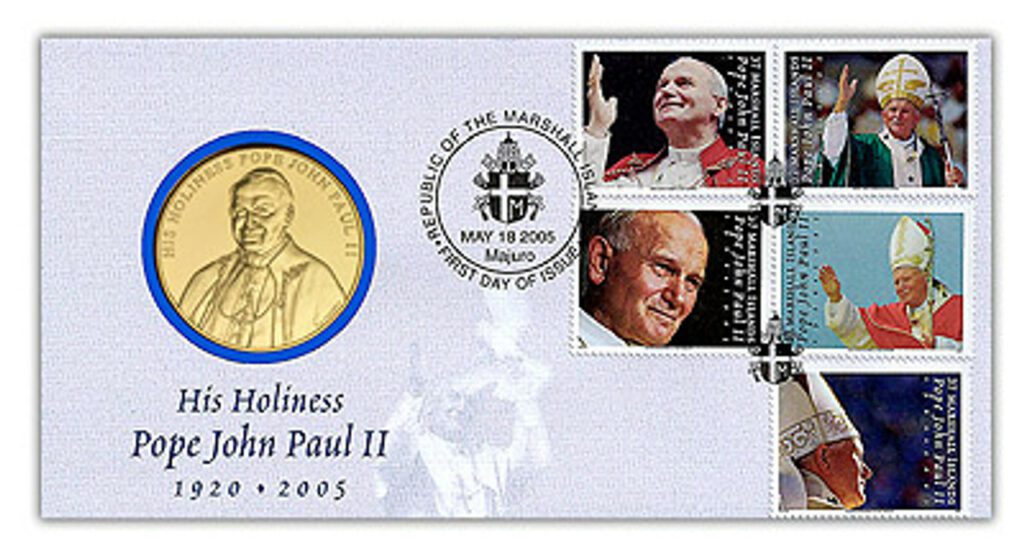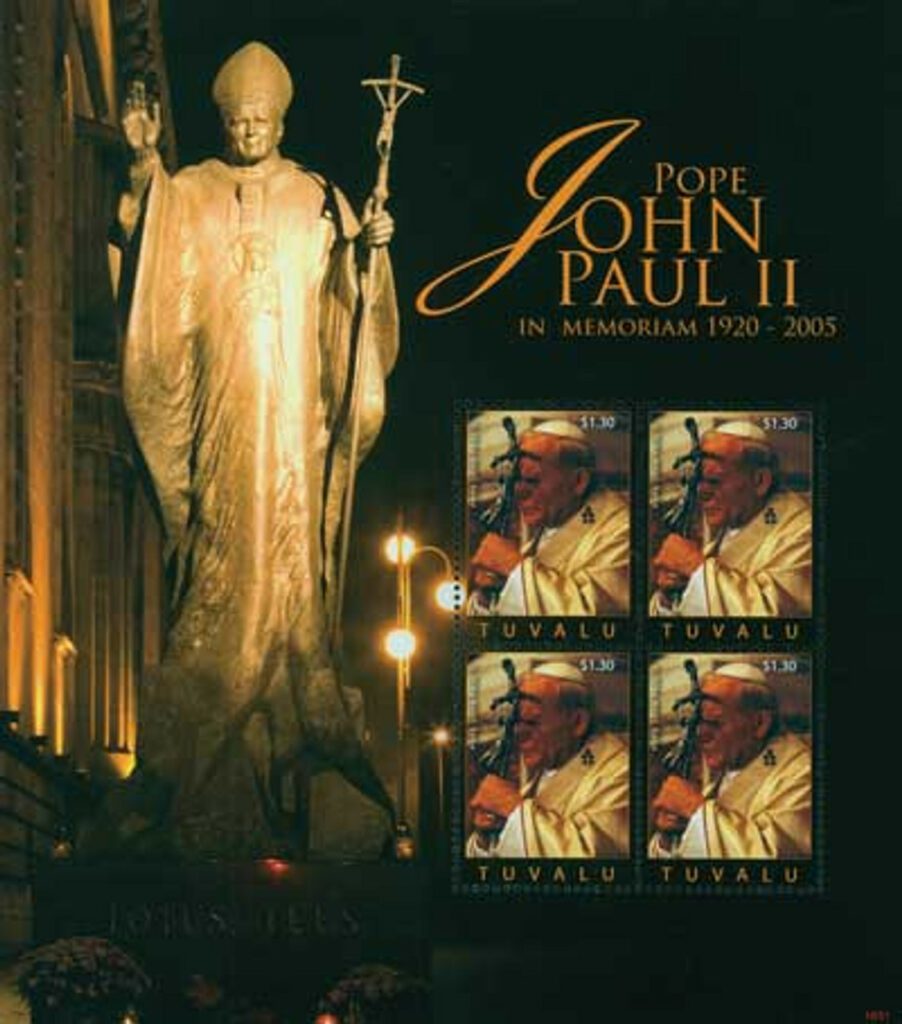On October 16, 1978, Karol Jozef Wojtyla was selected as Pope of the Catholic Church.
Born Karol Jozef Wojtyla on May 18, 1920, to Karol Wojtyla and Emilia Kaczorowska, Pope John Paul II was raised in the Polish town of Wadowice. The youngest of three children, Karol was baptized on June 20, 1920. As a student at the Marcin Wadowita prep school he excelled in all of his subjects. His time in elementary and prep school showed that he had a talent for acting, which he seemed to enjoy, performing in various student plays during his years there.
After graduating from high school in 1938, he began his studies at Krakow’s Jagiellonian University as well as a school for drama. A year later, however, Jagiellonian University was forced to shut down due to the Nazi occupation. To prevent deportation to Germany, he spent the greater part of four years (1940-44) working in a chemical factory and as a stonecutter in a quarry in Kraków.
In 1940, Karol met Jan Tyranowski, who brought the writings of John of the Cross and Teresa d’Avila into his life. Jan was a greatly spiritual man, and there is no doubt that this meeting and Karol’s reading had a profound impact on his decision to join the clergy. At this same time, Karol was also working in the underground theater.
By 1942, it was obvious to Karol that despite his great joy for acting, the priesthood was his true calling. At this point he enrolled in the clandestine seminary in Krakow under Cardinal Adam Stefan Sapieha. Karol was fortunate to continue acting as one of the forerunners of the “Rhapsodic Theatre,” an underground theater group. After World War II he finished his studies and on November 1, 1946, was ordained into the priesthood.
Over the next few years, Father Wojtyla rose through the hierarchy of the Catholic Church, eventually becoming acting Archbishop of Krakow in 1962 and Cardinal five years later. Wojtyla spent several years as Cardinal, successfully bridging the gap between the Communist government and the Catholic Church.
Then in 1978, Pope Paul VI died suddenly. He was succeeded by Pope John Paul I, who served for just 33 days before his unexpected death (the shortest service in modern times). For the second time that year, the cardinals met behind sealed doors at the Sistine Chapel to choose a new pope on October 14.
According to some accounts, the two leading contenders were archconservative Cardinal Giuseppi Siri and liberal Cardinal Giovanni Benelli. The votes were so equally divided, neither could get the majority of votes needed. So on the second day of voting, one man suggested Cardinal Wojtyla as a compromise. On October 16, after eight ballots, Wojtyla had more than 90 of the 111 votes cast. He responded, “With obedience in faith to Christ, my Lord, and with trust in the Mother of Christ and the Church, in spite of great difficulties, I accept.”
After 6 p.m. that day, Wojtyla was announced to crowd and delivered a speech in near perfect Italian. He admitted he was uneasy about his nomination, but accepted it, “in the spirit of obedience to Our Lord and with total trust in his Mother, the Most Holy Madonna.”
Wojtyla was installed as pope days later on October 22. He chose the name John Paul II in honor of his predecessor (who had taken the names of his two predecessors). John Paul II was not only the first Slavic Pope, but also the first non-Italian Pope in 455 years. And at 58, he was the youngest man to hold the office in 132 years.
John Paul II’s criticism of dictators Stroessner (Paraguay), Pinochet (Chile), and Marcos (Philippines) encouraged opposition movements that led to their downfall. John Paul II supported the Polish Solidarity movement by smuggling messages to union leaders via priests. Many historians believe his role was crucial to the collapse of communism in Poland.
Over the course of his papacy, John Paul II made 144 visits within Italy, and 102 visits outside of Italy, visiting almost 130 countries. Traveling more than all other Popes combined, Pope John Paul II traveled 723,723 miles – which is about 30 trips around the Earth. He visited every continent except Antarctica.
President George W. Bush awarded the Presidential Medal of Freedom to Pope John Paul II in 2004. “His Holiness Pope John Paul II has championed the cause of the poor, the weak, the hungry, and the outcast…defended the unique dignity of every life, and the goodness of all life… His principled stand for peace and freedom has inspired millions and helped to topple communism and tyranny.”
After 26 years as pope, John Paul II died on April 2, 2005. He was the second longest-serving pope in modern history. Nearly a decade after his death, John Paul the II was canonized and made a saint. His feast day is celebrated on the anniversary of his papal inauguration, October 22.
Click here for more John Paul II stamps.
Click here to see what else happened on This Day in History.






Wonderfully story.
my favorite pope is St John Paul II (1978 to 2005).
My favorite comment (I do love humor!) was about how they selected a Pope in 1978 My understanding is that they “took a poll'” and the humor only works if you say it out loud (aka “took a Pole”).